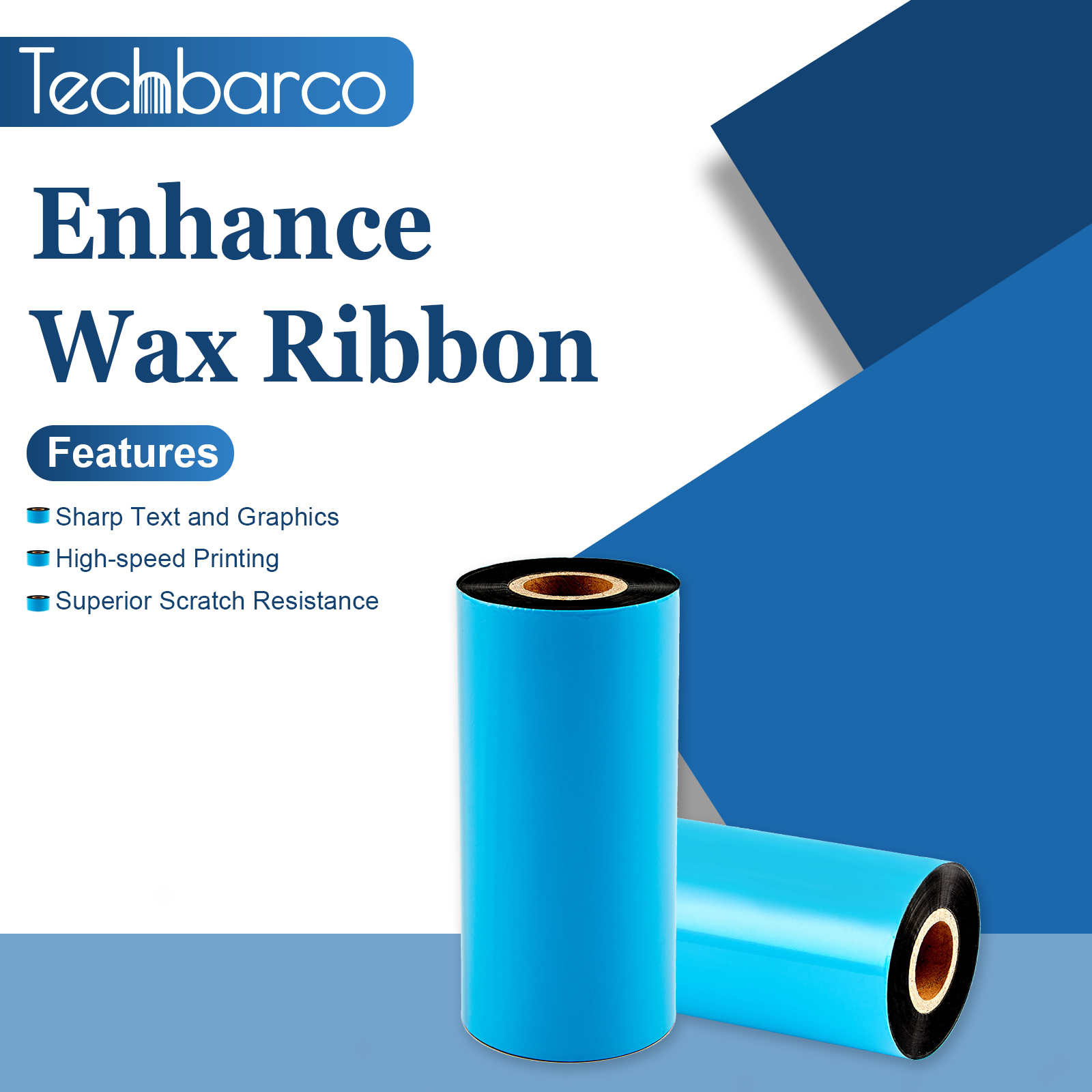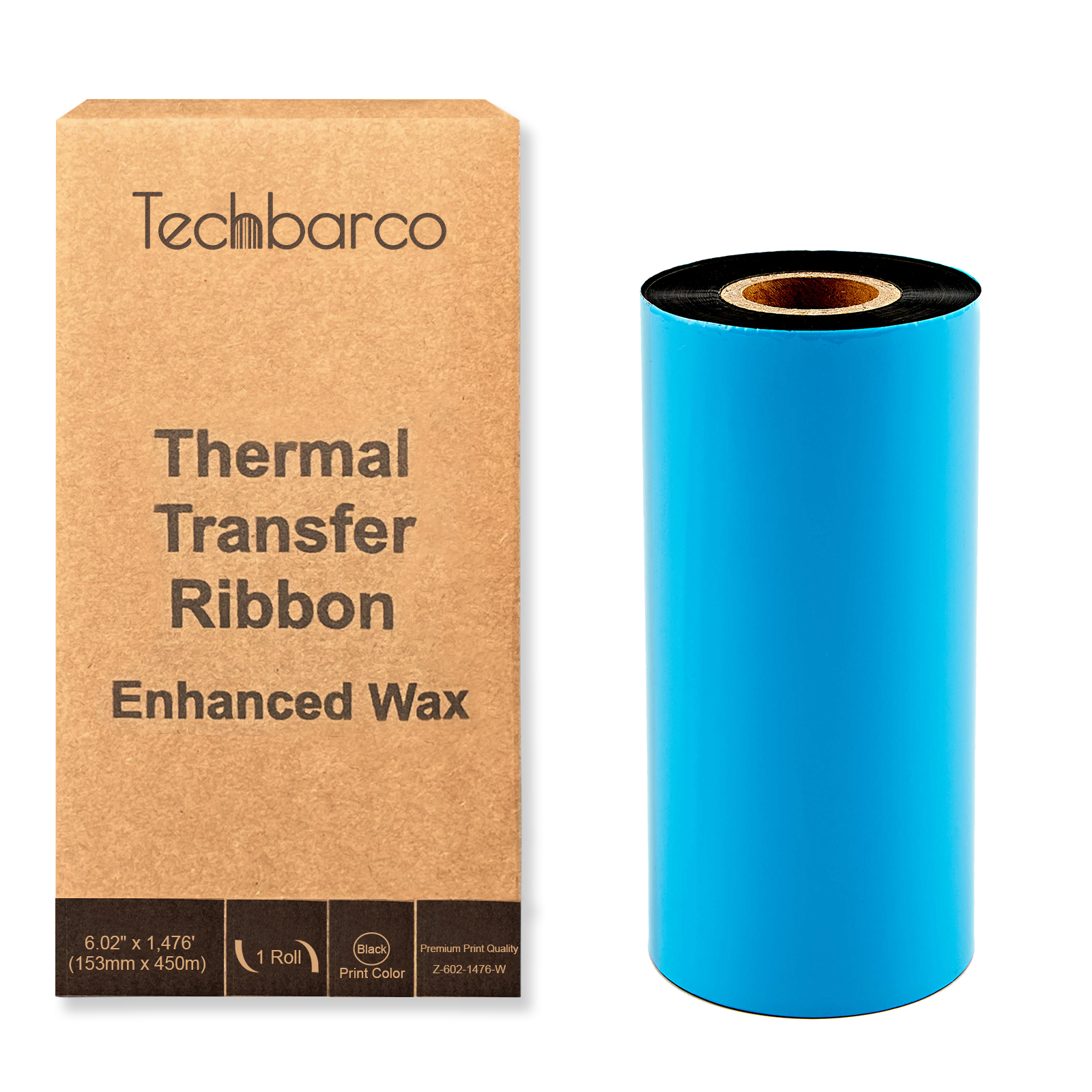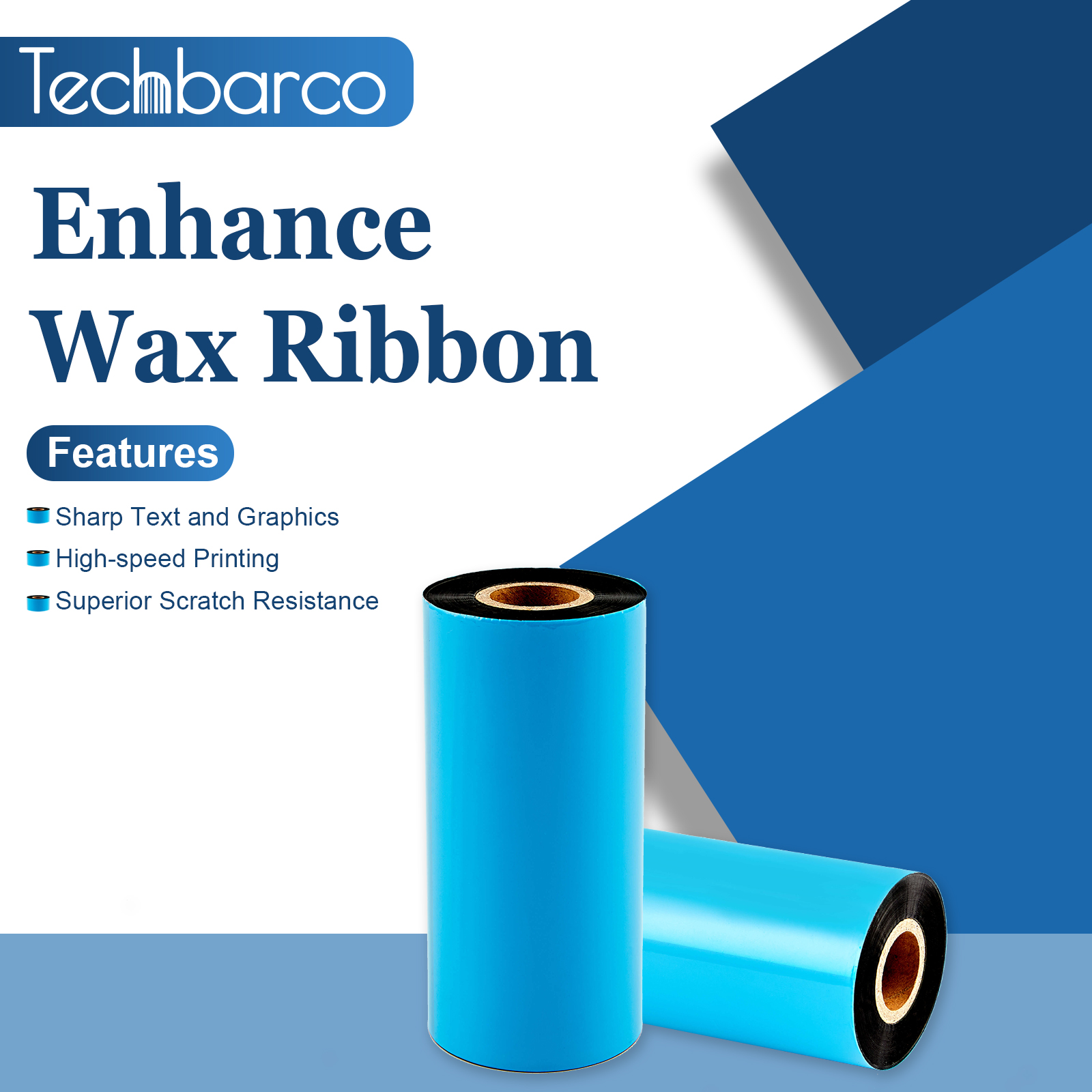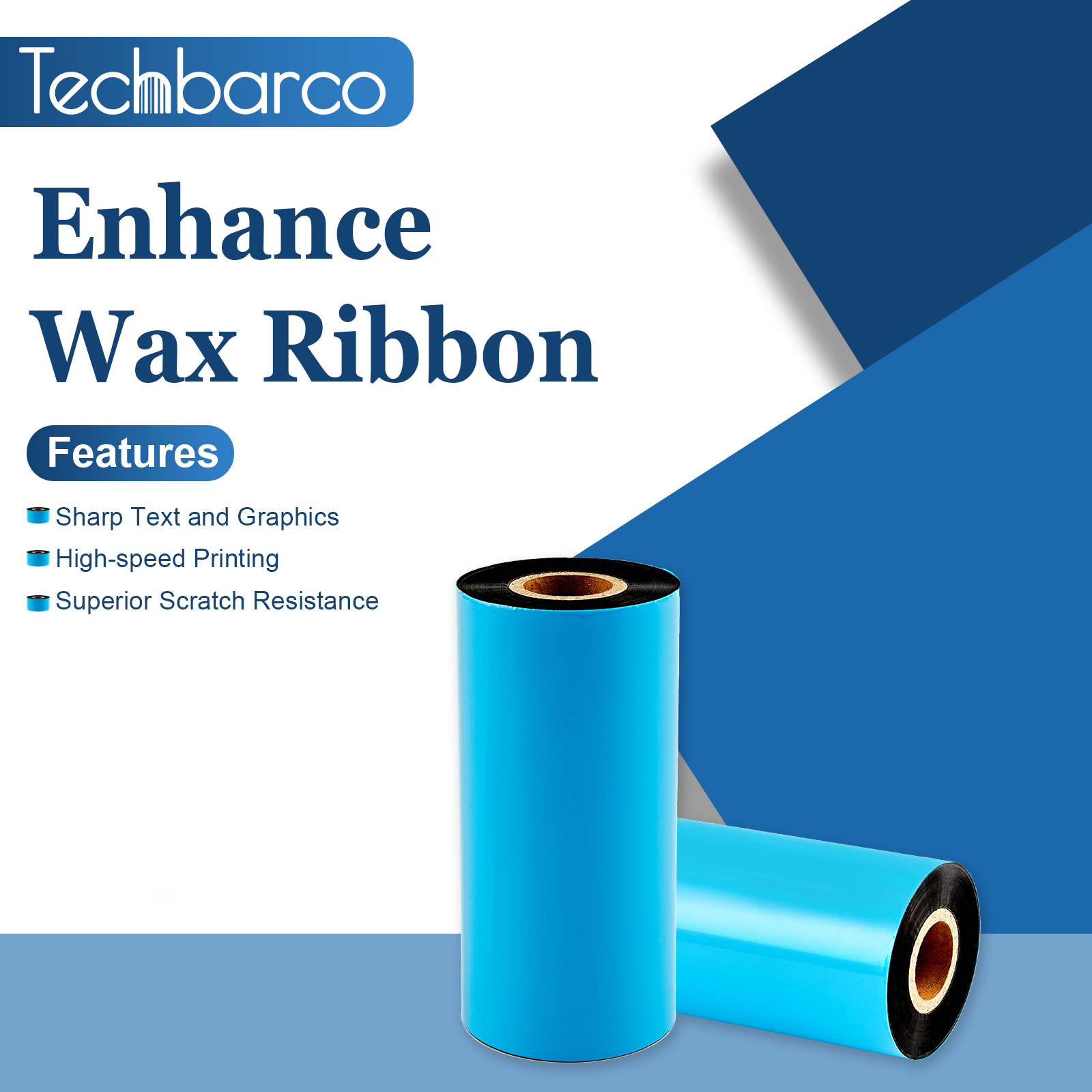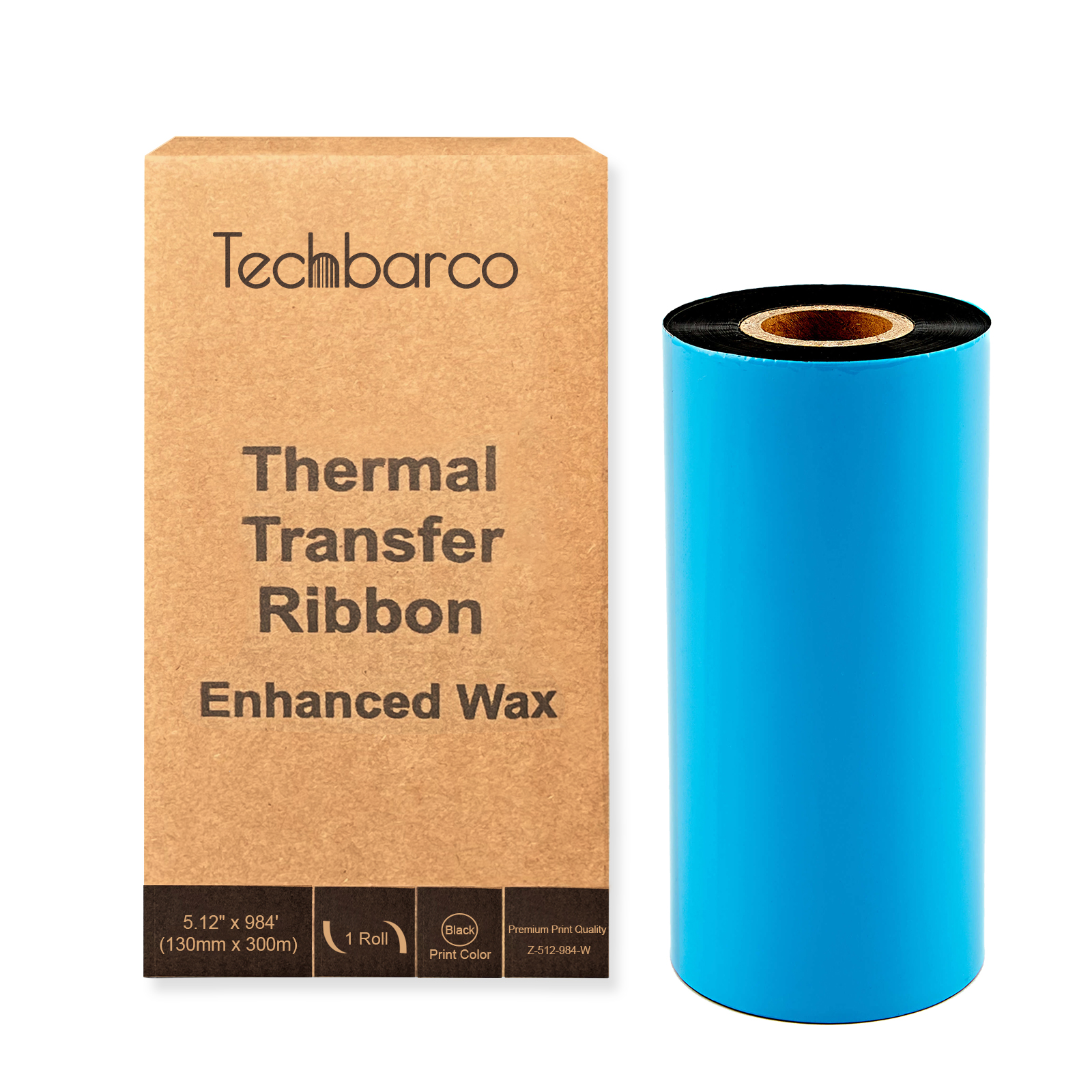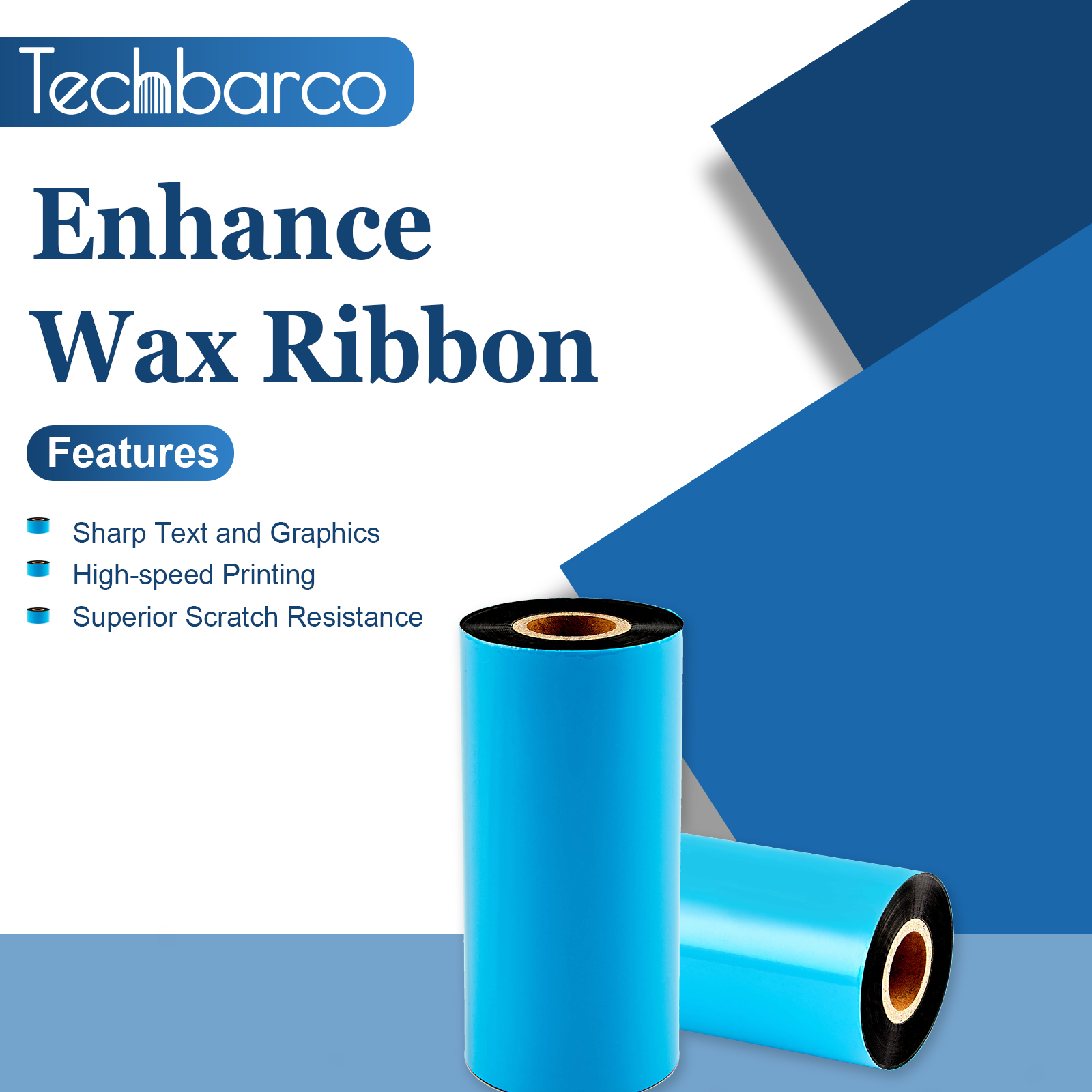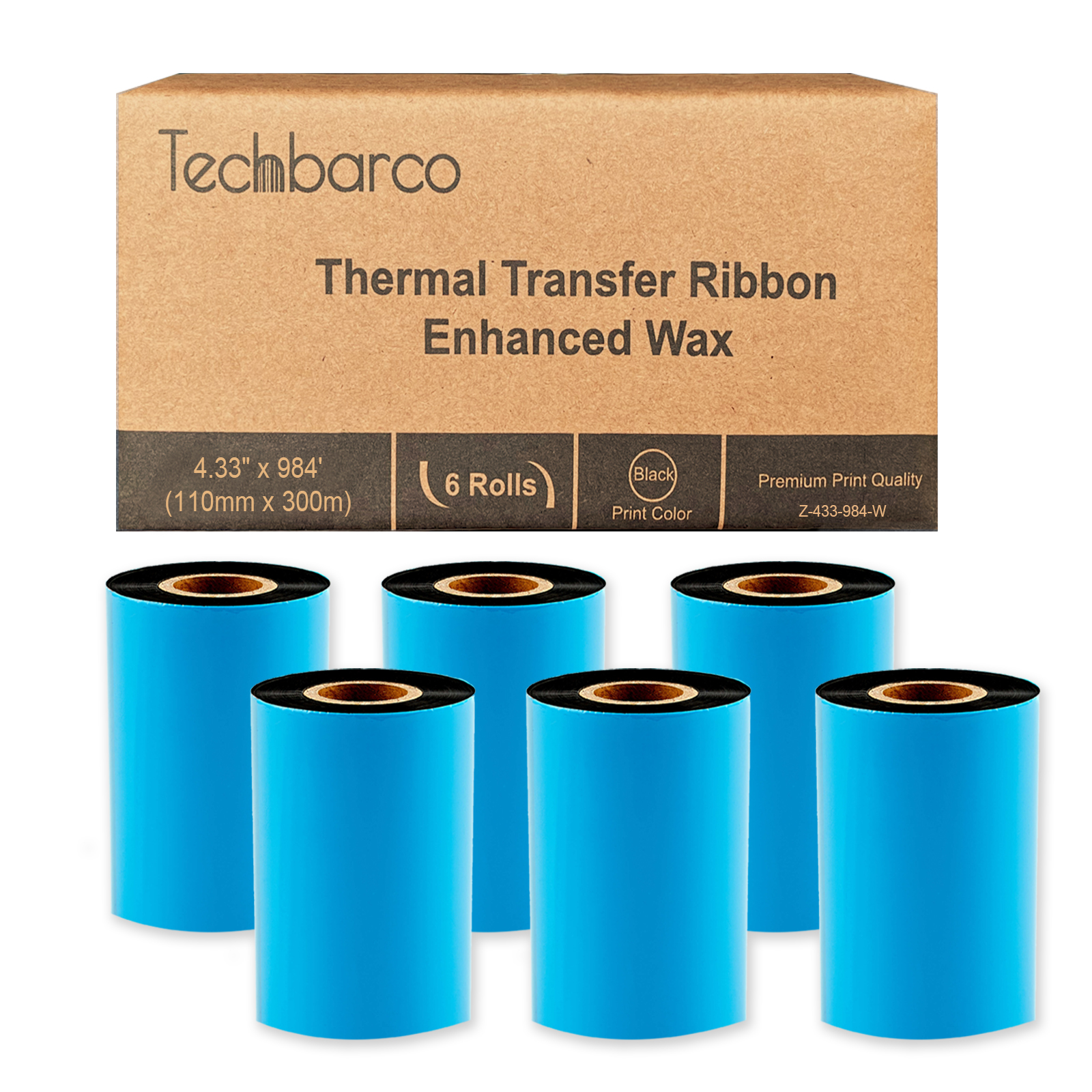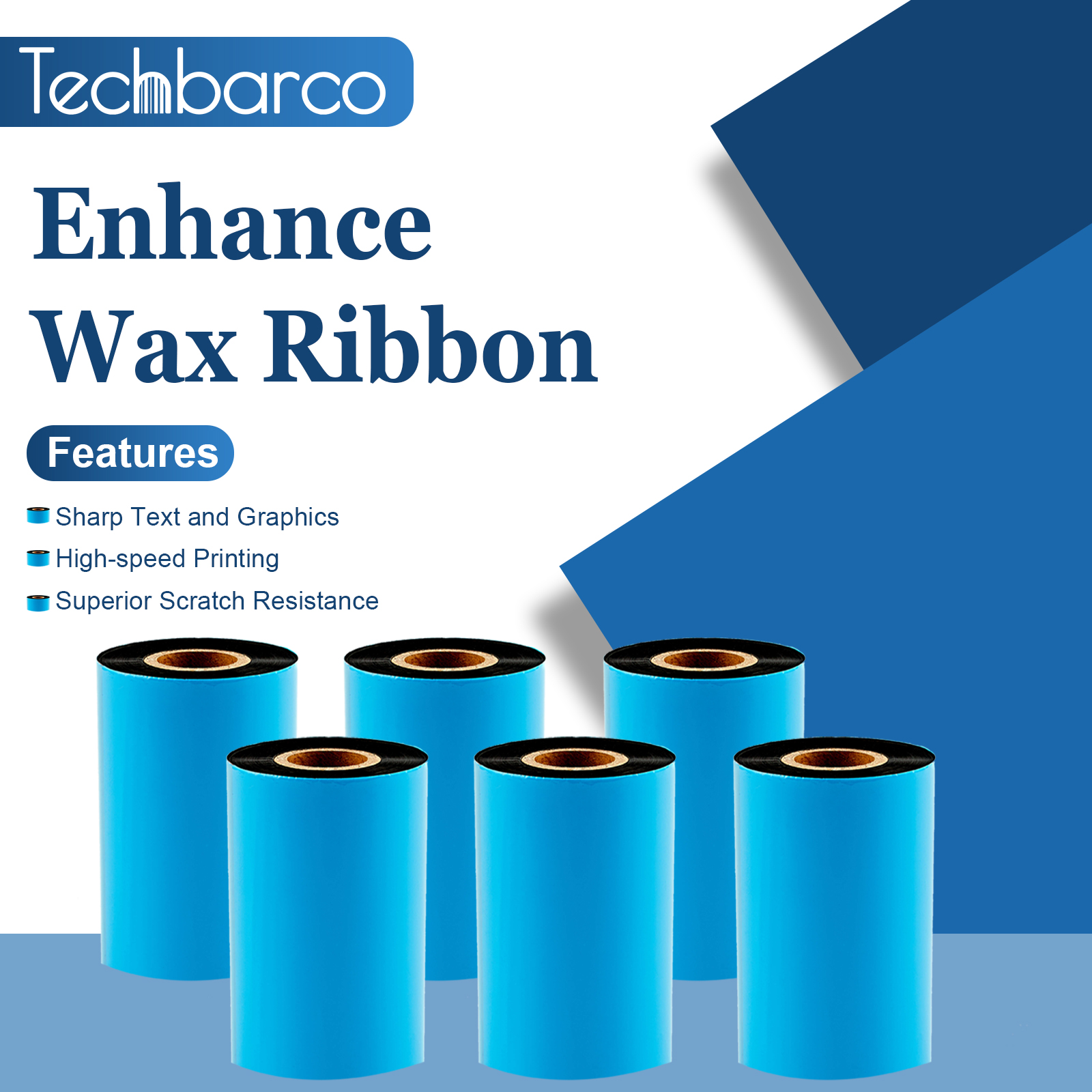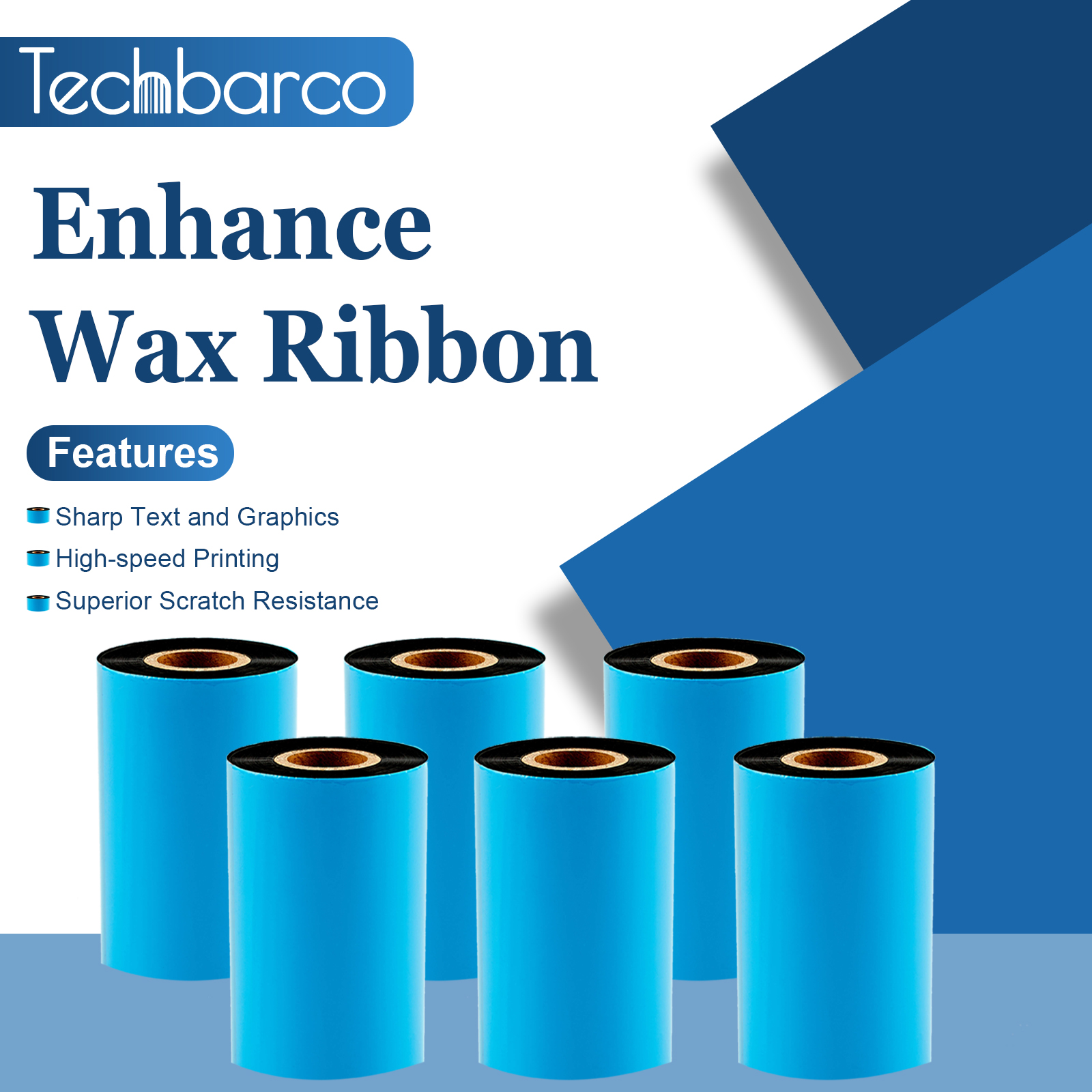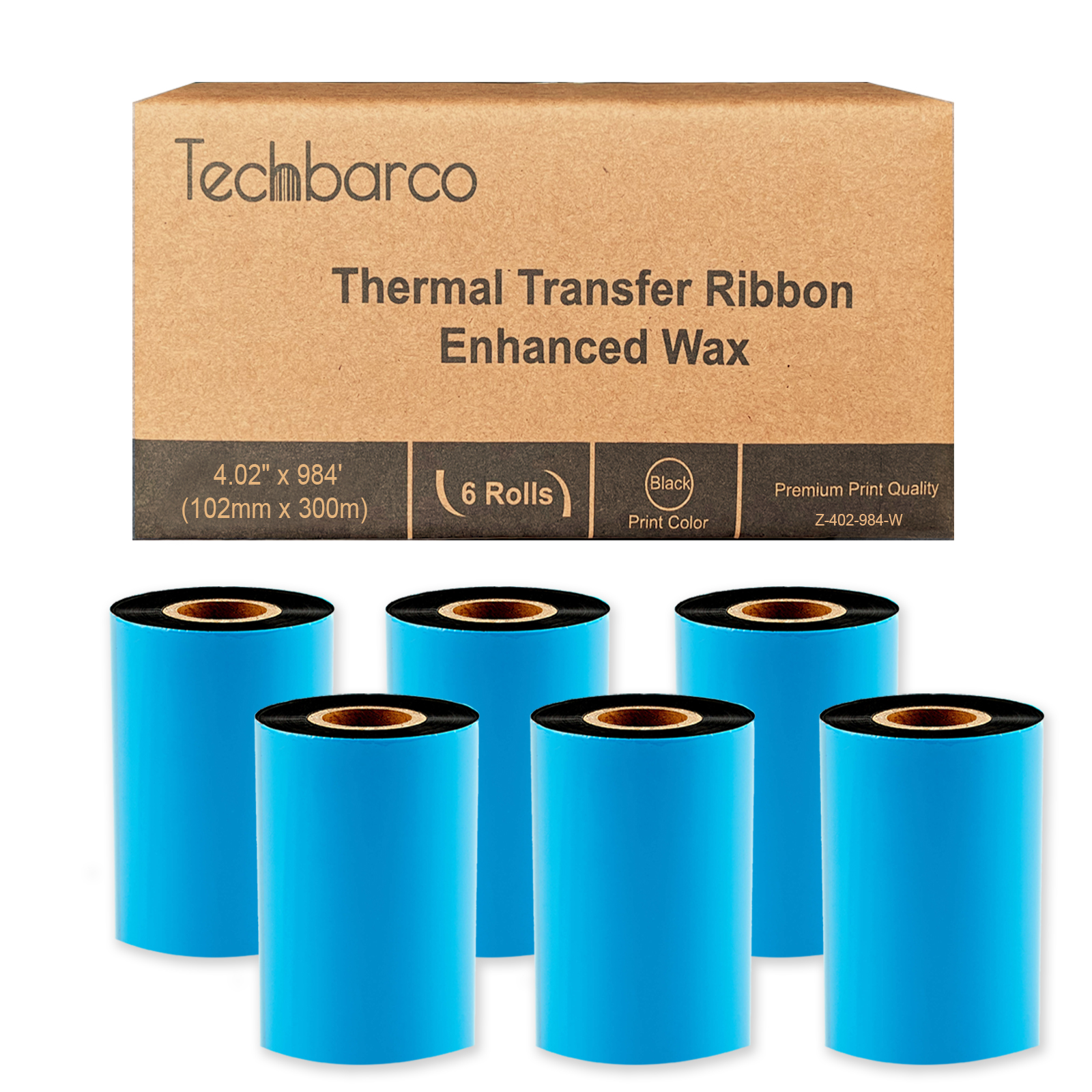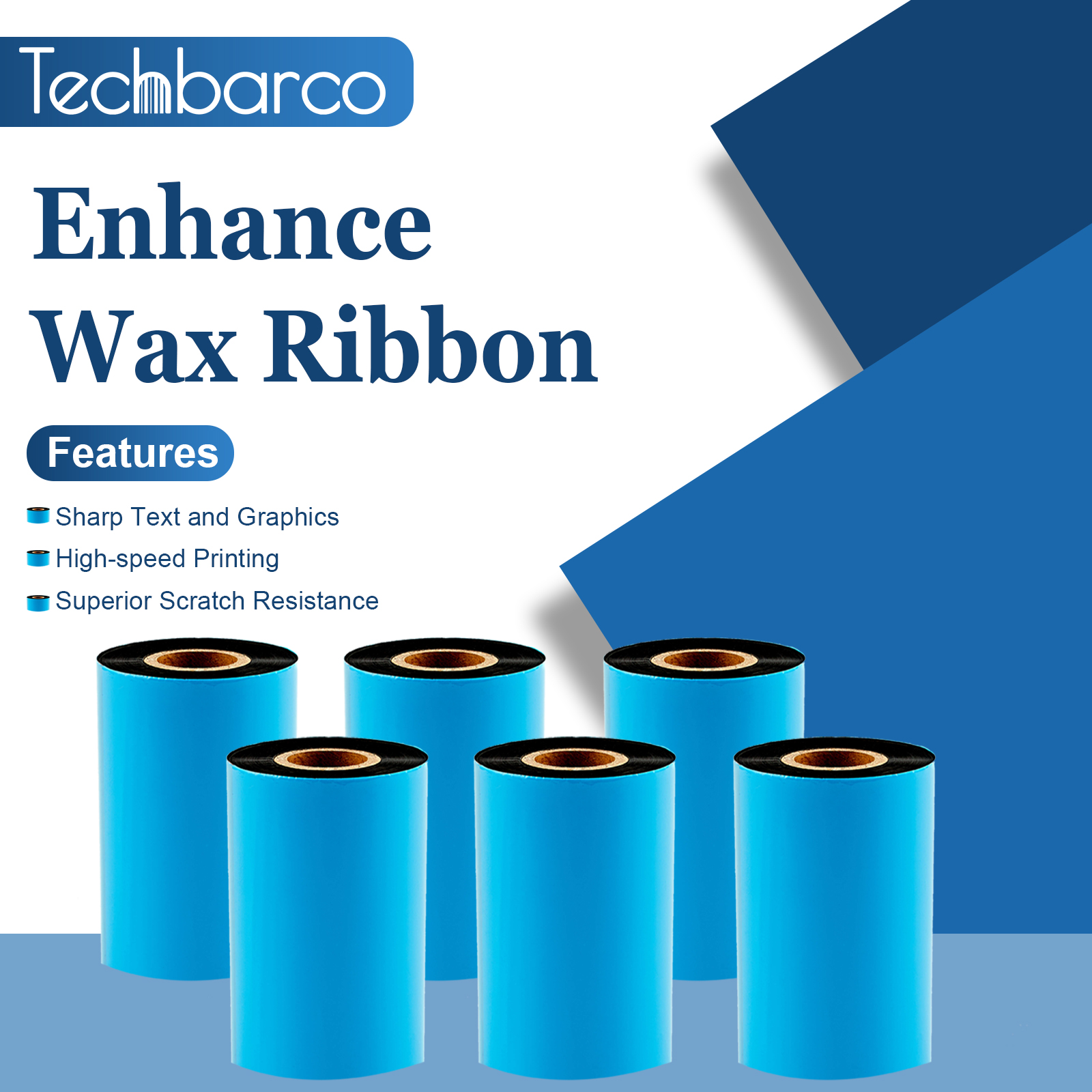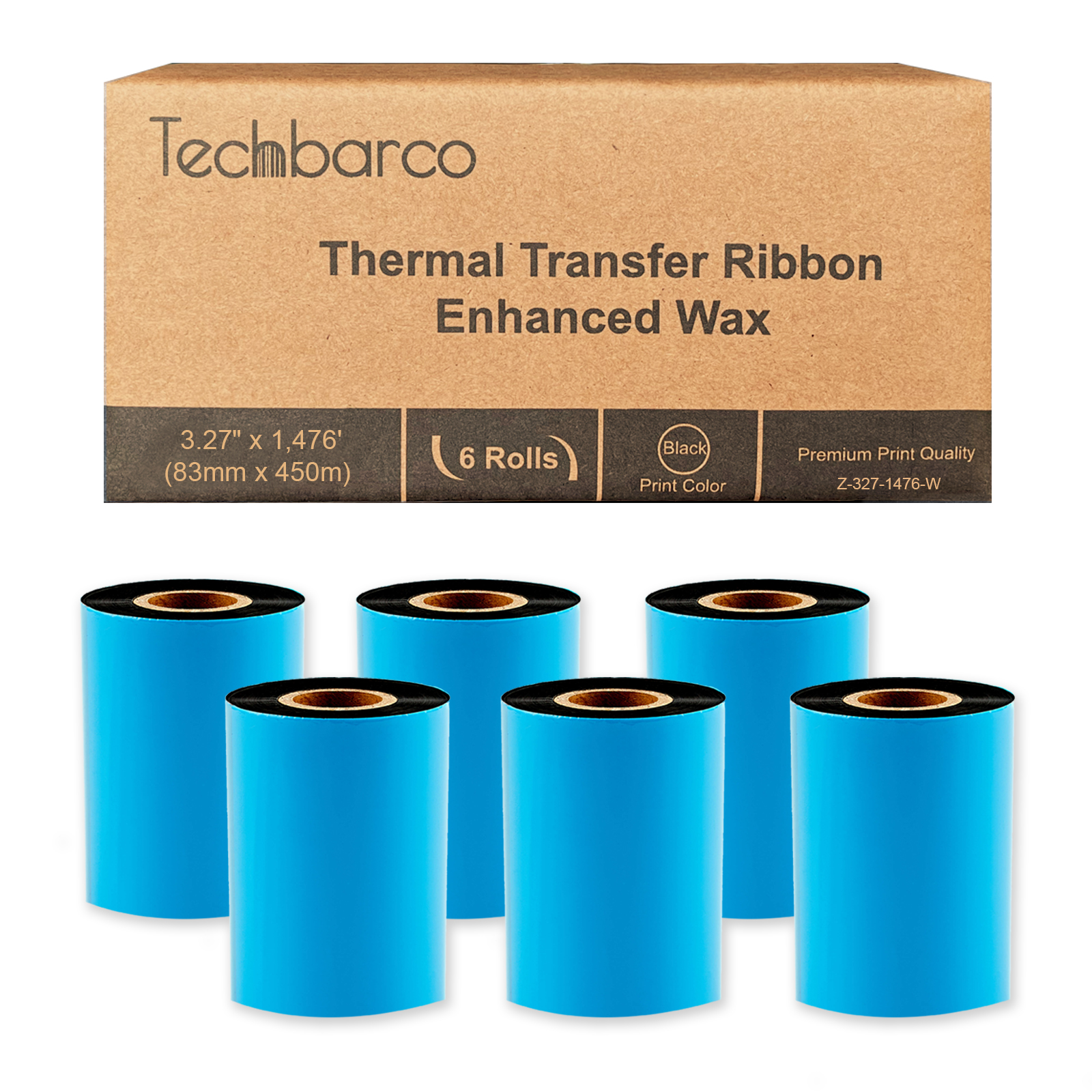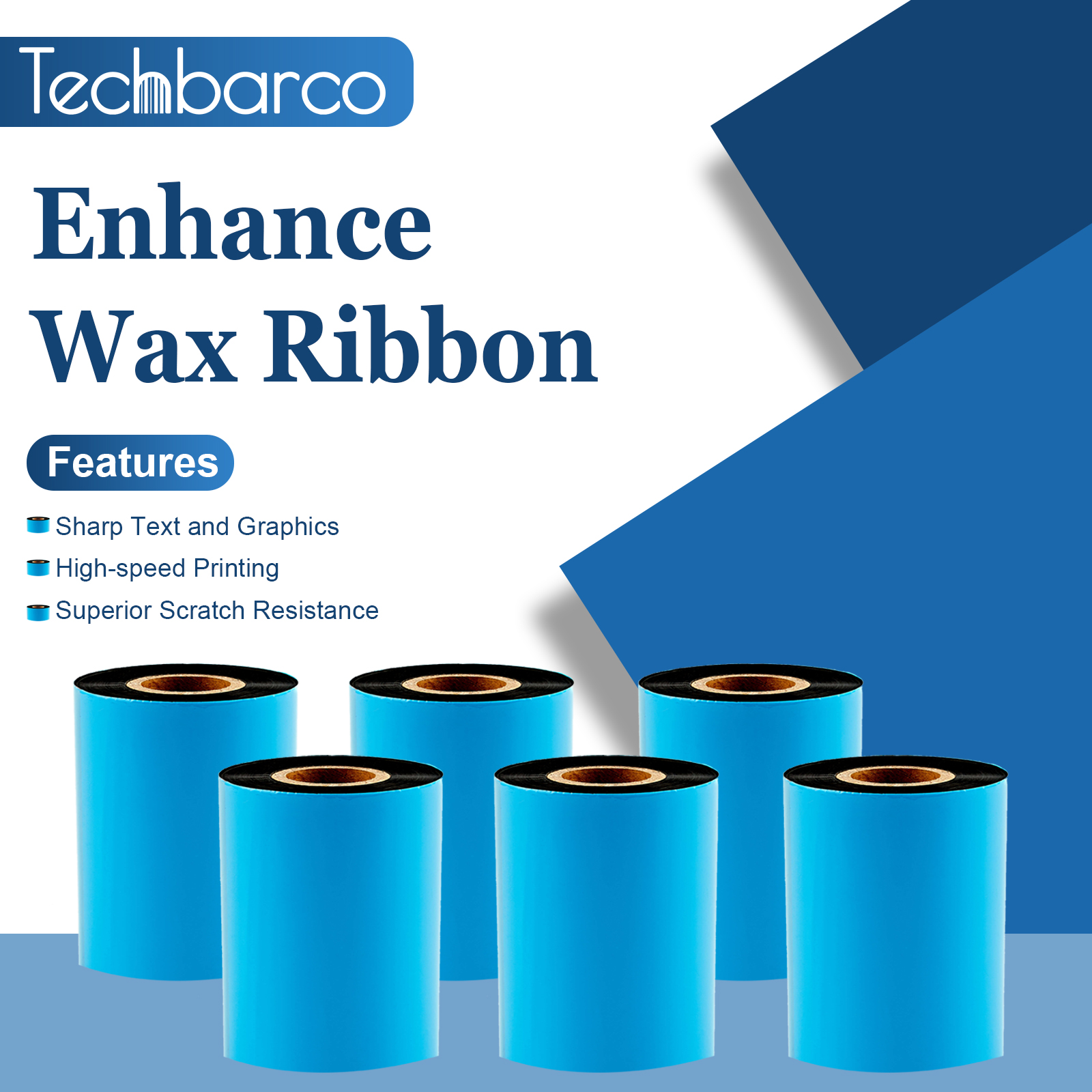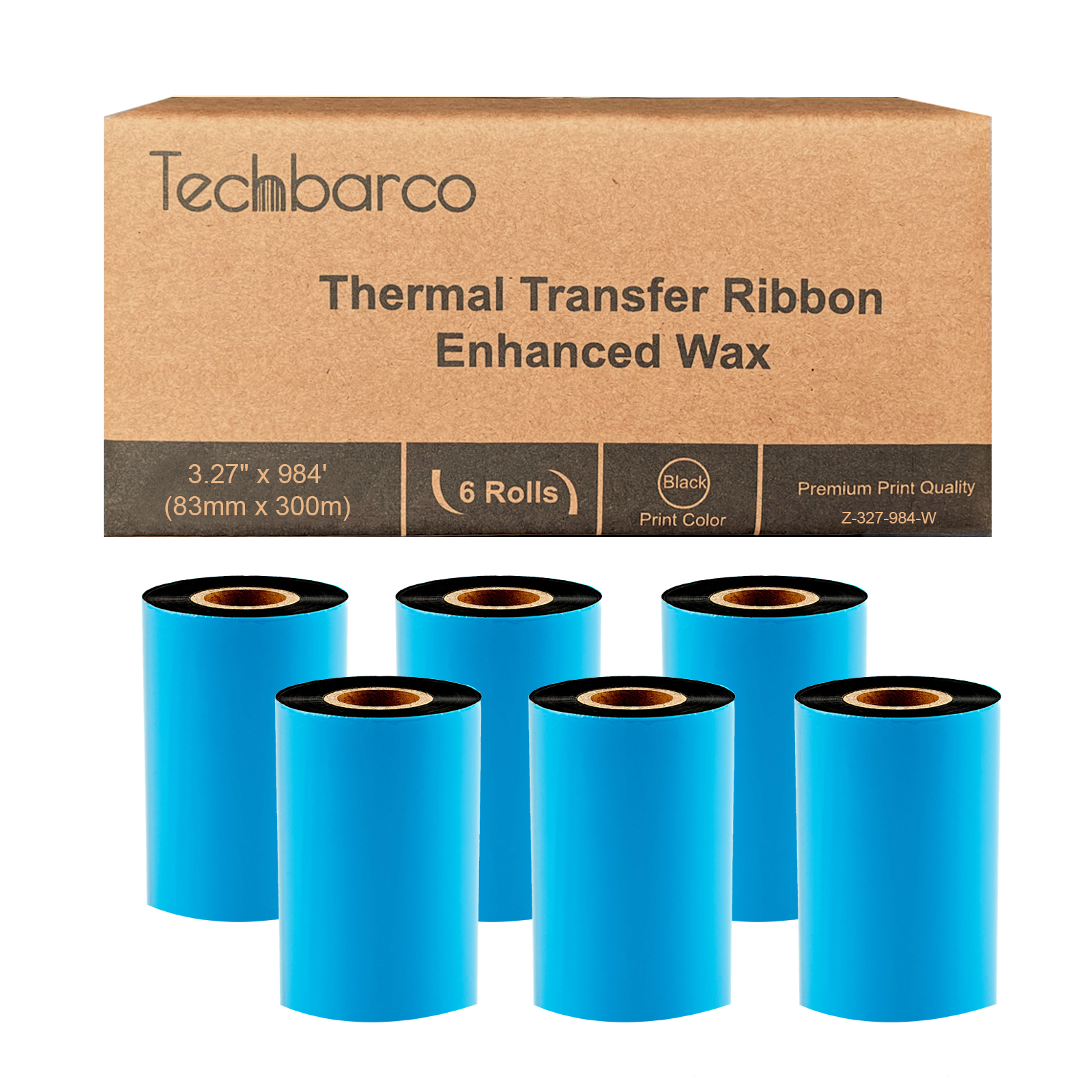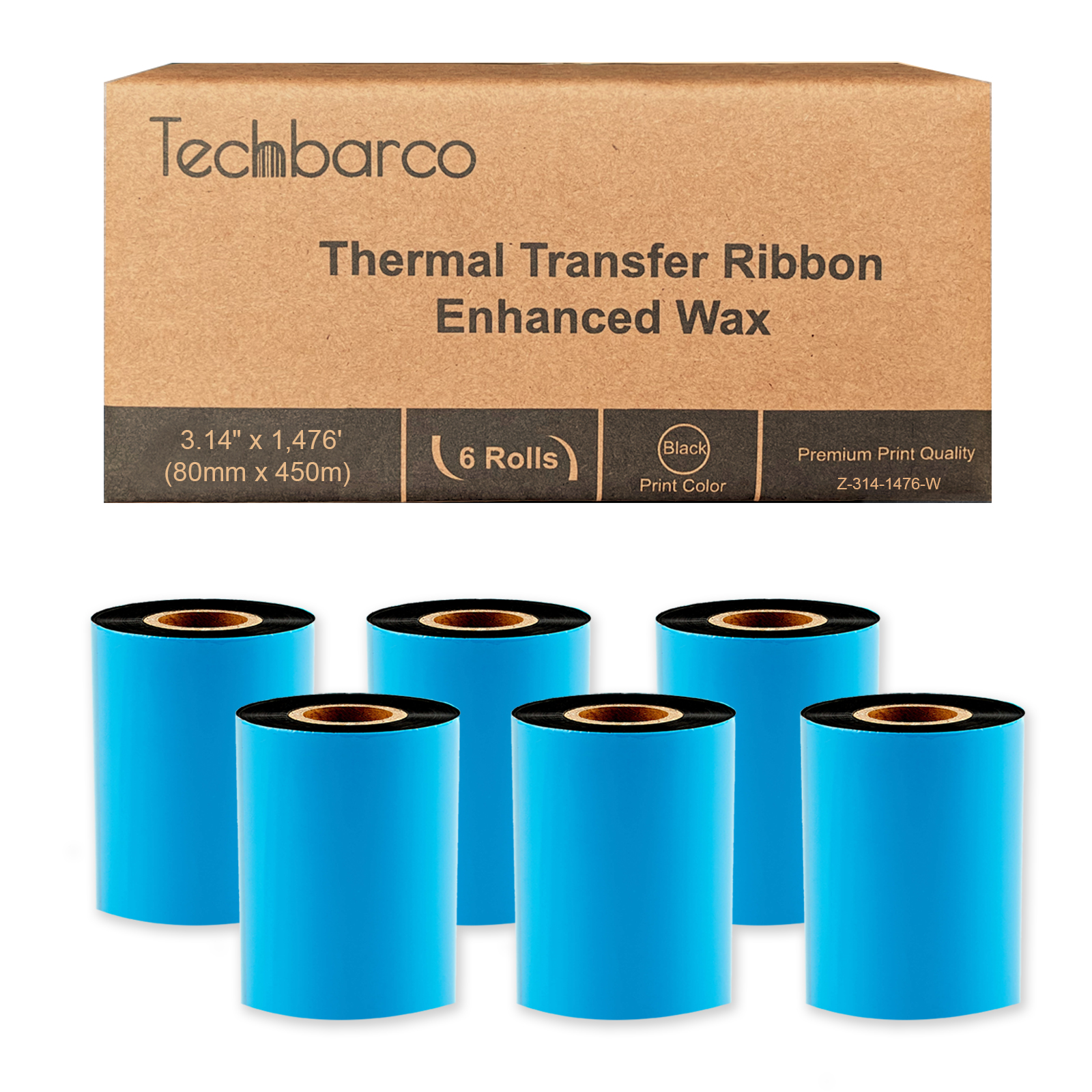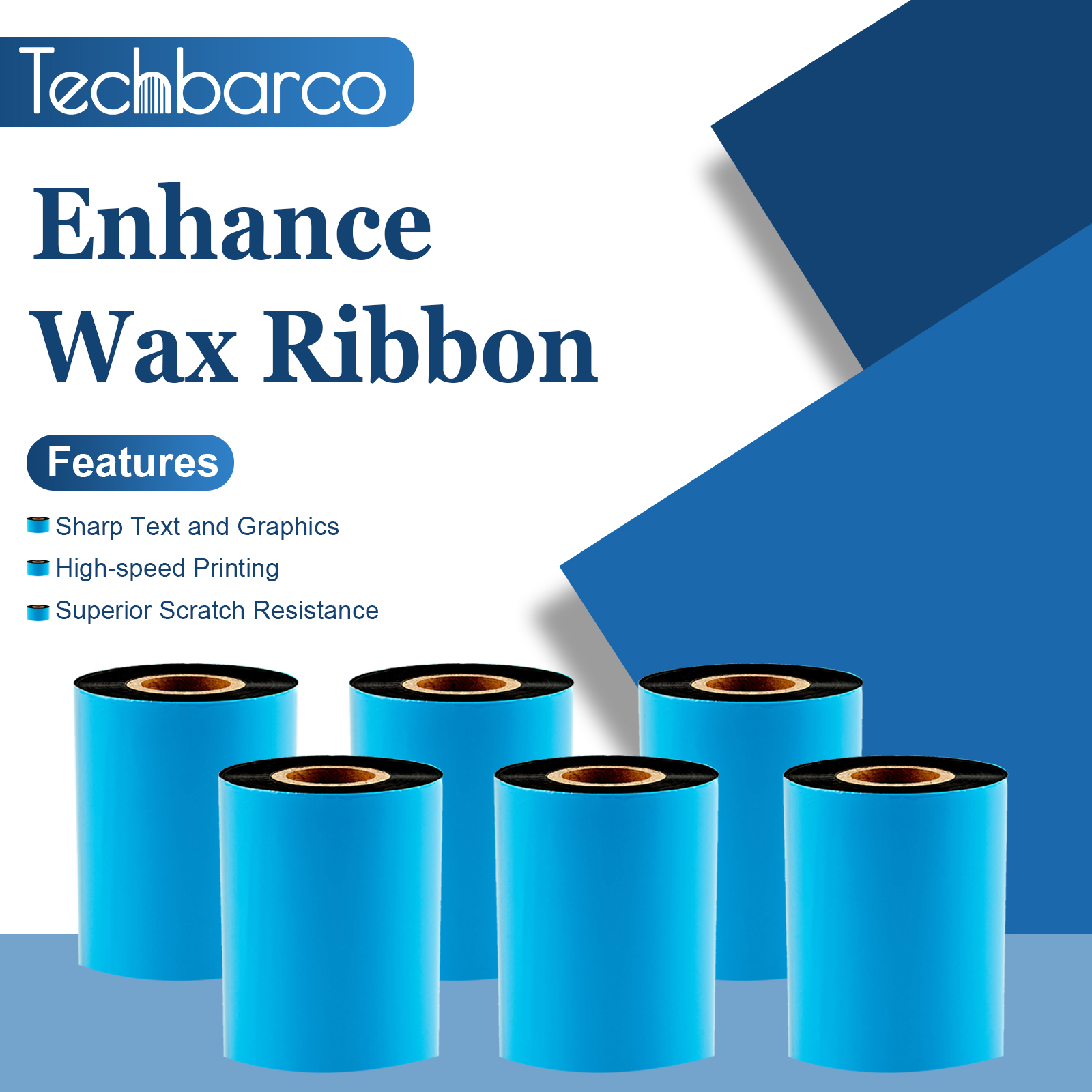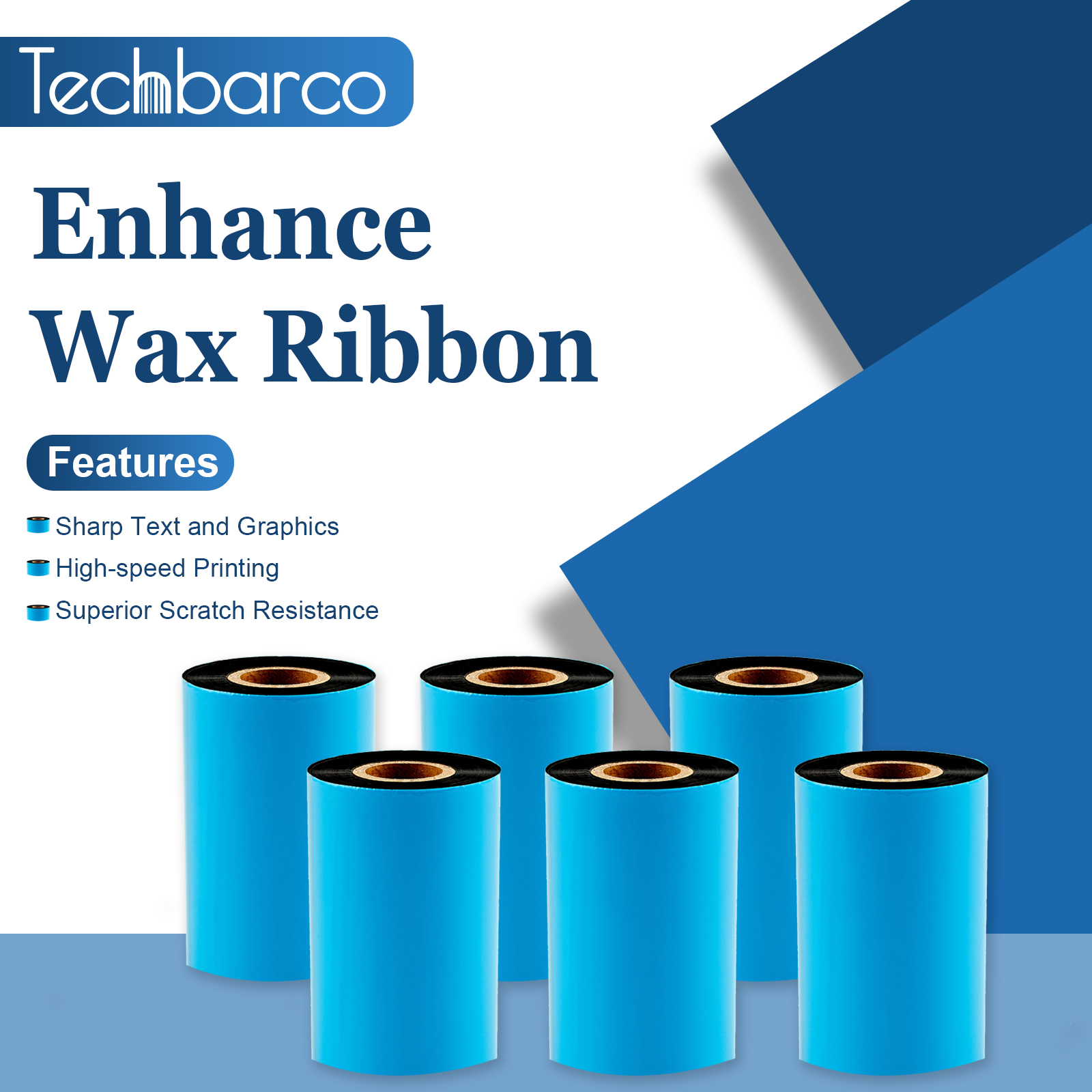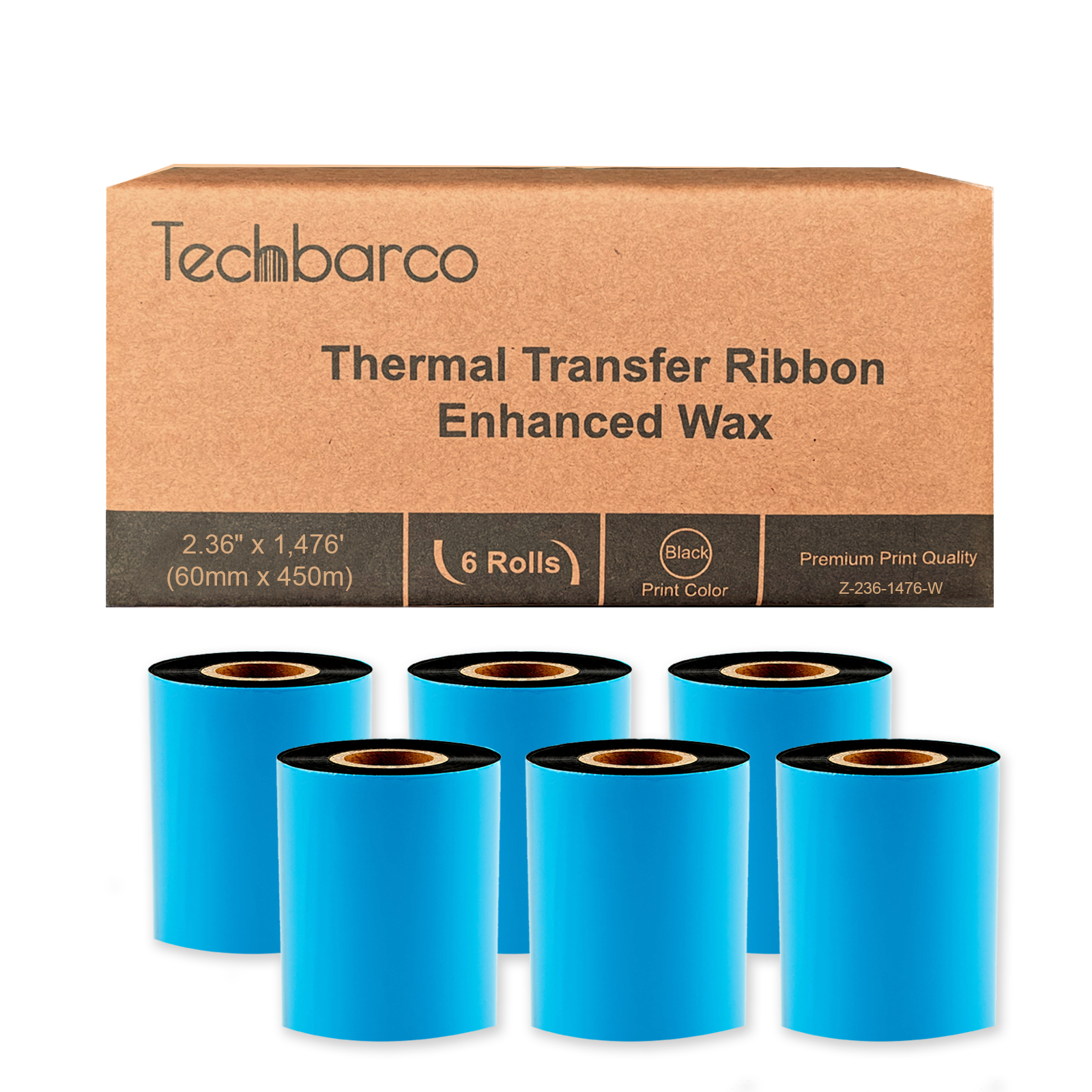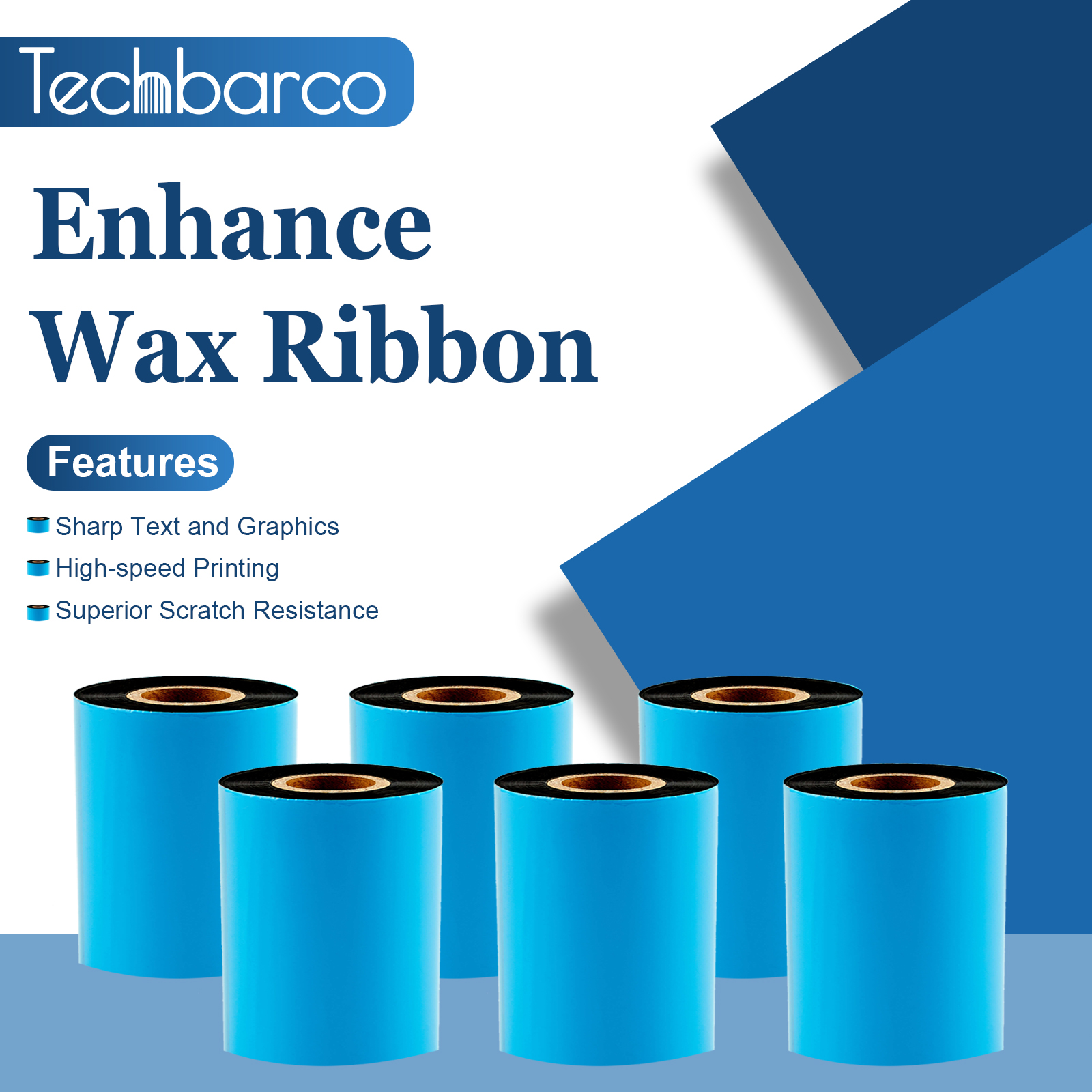Thermal Transfer Ribbon
What is a Thermal Transfer Ribbon?
In the realm of modern printing, thermal transfer ribbons stand as a cornerstone for producing durable and precise prints. Operating in tandem with thermal printers, these ribbons are integral to a process that employs heat to transfer ink onto various mediums. Comprised of a thin film coated with layers of ink—wax, resin, or a combination thereof—they react to the printer's thermal head. As heat is applied, the ink melts and adheres to the paper, plastic, or other materials, creating high-resolution barcodes, labels, and graphics that resist fading and smudging. From packaging labels to product identification, thermal transfer technology delivers reliable and long-lasting results, making these ribbons a pivotal component in industrial, retail, and healthcare settings.
Thermal Transfer Ribbons: Types and Uses
Types of Thermal Transfer Ribbons
Thermal transfer ribbons are broadly divided into three categories:
- Wax Ribbons: Offering excellent print quality on standard paper labels, wax ribbons are the most economical choice. They provide crisp, clear images for basic scanning requirements but are less resistant to smudging and environmental factors compared to other types.
- Wax-Resin Ribbons: As a hybrid, wax-resin ribbons afford more durability than pure wax ribbons, making them perfect for finer, detailed prints and harsher handling conditions. They offer better resistance to smearing and are suitable for textured paper or synthetic film materials.
- Resin Ribbons: Known for their robustness, resin ribbons stand up to extreme environments, including exposure to high temperatures, chemicals, and outdoor elements. They are the best option when it comes to permanence and are essential for high-durability applications.
Matching Ribbons to Substrates:
Each TTR type pairs with specific substrate materials to optimize adhesion, legibility, and durability:
- Wax for Paper: Wax ribbons adhere well to matte and semi-gloss paper labels, which are commonly used for shipping and inventory management in warehouses and general retail.
- Wax-Resin for Mixed Use: The versatility of wax-resin ribbons makes them suited for smooth, glossy paper and synthetic labels found within the food industry and horticulture settings where moisture resistance is necessary.
- Resin for Synthetics: Resin ribbons create the strongest bond with polyester, polypropylene, and vinyl labels, which is critical for assets in automotive manufacturing, electronic equipment, and healthcare, where labels may face sterilization processes.
How to Choose the Right Thermal Transfer Ribbon?
Selecting the right thermal transfer printing ribbon involves a careful evaluation of several factors:
- Assess Your Label Material: Determine whether your labels are made of paper, polyethylene, polypropylene, polyester, or another material.
- Consider Environmental Conditions: Look at the conditions the label will be subjected to, such as exposure to sunlight, chemicals, or heavy wear and tear. This will help you decide between wax, wax-resin, or resin.
- Understand End-Use Requirements: Reflect on the expected lifespan and required durability of the label. High-contact items need more durable TTRs like resin, whereas temporary labels can get by with wax.
- Evaluate Print Quality Needs: If fine detail or small font readability is crucial, lean towards wax-resin or resin for their superior clarity and crispness.
- Review Cost Implications: While wax ribbons are less expensive, they may not provide the durability needed for long-term use, potentially leading to higher replacement costs. Conversely, the resin may be pricier upfront but could offer savings over time due to reduced reprinting needs.
- Check Compliance Requirements: Certain industries have stringent labeling standards that must be met. Ensure that the TTR you select is compliant with regulatory requirements relevant to your industry.
By thoroughly considering the substrate, environment, application, print quality, cost, and compliance, you can confidently determine the ideal ribbon for your needs, ensuring that your labels perform as intended throughout their lifecycle.
Parameters of Thermal Transfer Ribbons
Each thermal transfer ribbon is designed keeping a lot of technical parameters in mind, which define the suitability of the ribbon to undertake a particular job. The identification of these technical parameters-from material makeup to printer compatibility-is helpful in determining the best TTR for your printing applications.
1. Material Composition
The base material of a TTR dictates its application and endurance. Primarily, ribbons are categorized into three materials: wax, resin, and a combination known as wax-resin. Wax-based ribbons are typically used for general-purpose label printing where minimal durability is sufficient, such as in standard shipping labels. Resin-based ribbons are robust and designed for environments requiring resistance to high temperatures and chemicals, making them ideal for industrial applications. The wax-resin ribbons are versatile, suitable for both paper and synthetic labels, and offer a blend of durability and print quality.
2. Dimensions
The dimension of a TTR is critical for its proper functioning within a printer. It includes the width, length, and core of the ribbon. The width must correspond to the print media and the printer's specifications to avoid issues like ribbon wrinkling or edge printing. The length determines how often the ribbon needs to be replaced and, thus, affects productivity. Core sizes vary and need to match the printer's specifications. Common diameters include half-inch (1/2"), one-inch (1"), and others that correspond to specific printer models and brands.
3. Color Properties
While black is the most commonly used color for TTRs due to its readability and scanability, ribbons are available in a spectrum of colors. Colored ribbons are utilized for various purposes, such as color-coding for product identification, customer branding, or aesthetic requirements. The vibrancy and consistency of the color across different batches are vital for maintaining the integrity of the printed information.
4. Coating Technology
The coating technology of thermal transfer ribbons is distinguished by two configurations: Coated Side Out (CSO) and Coated Side In (CSI). With CSO ribbons, the ink coating is on the exterior of the ribbon roll. This type is common in desktop printers, where the ink side faces outward and comes into direct contact with the substrate during printing. CSI ribbons have the ink applied to the inner side of the roll. These are typically used in industrial printers, where the ribbon unrolls and the inked side flips inward to meet the substrate.
5. Printer Compatibility
Not all ribbons are created equal, and not all will work with every printer. Printer compatibility is determined by factors such as the ribbon core size, notch positioning (for printer recognition), and whether the ribbon is coated side in (CSI) or coated side out (CSO). The type of printhead technology in use—flathead or near edge—also influences the choice of TTR. To accommodate a diverse range of printing requirements, we offer a selection of ribbons compatible with a variety of printers, including but not limited to SATO, Datamax, Intermec, and Zebra models.
How to Store Thermal Transfer Ribbons
Proper storage of thermal transfer ribbons (TTR) is crucial for maintaining their effectiveness and ensuring high-quality prints. Improper handling or storage can lead to issues such as poor print quality, ribbon breaks, and even printer damage. Below are detailed strategies for preserving your TTRs before they hit the printer.
1. Environment Control:
- Temperature: Store your ribbons in a cool, dry place. The ideal temperature range is between 5°C and 35°C (41°F and 95°F). Extreme temperatures can cause the ribbons to stick together or become brittle.
- Humidity: Aim for a relative humidity between 45% and 85%. High humidity can make the ribbons damp, while low humidity may dry them out, both affecting print quality.
- Light Exposure: Keep ribbons away from direct sunlight and bright lights. UV light can degrade the ribbon material over time, impacting its performance.
2. Physical Handling:
- Original Packaging: Retain the ribbons in their original packaging until ready for use. This packaging is designed to protect the ribbon from environmental factors.
- Dust-Free: Ensure that the storage area is free from dust and debris. Particles can adhere to the ribbons and potentially transfer onto the label, causing blemishes or printer jams.
- Positioning: Lay the ribbons flat or hang them vertically. Stacking rolls horizontally can cause uneven weight distribution, leading to wrinkles or creases.
3. Inventory Management:
- First-In, First-Out: Rotate your stock by using the oldest ribbons first. This practice prevents the ribbons from sitting for extended periods, which can affect adhesive properties and ink quality.
- Expiration Dates: Be aware of any "use by" dates on the ribbons, as materials can degrade over time, even under optimal conditions.
4. Usage Preparation:
- Acclimatization: Before installing a new ribbon, allow it to acclimate to the operating environment if it has been stored in conditions vastly different from where the printer resides. A few hours should balance the temperature and humidity levels with the surroundings.
- Inspection: Prior to loading, inspect the ribbon for any signs of damage, such as folds, creases, or tears, which could impact printing results.
5. Cautionary Measures:
- Avoid Gases and Chemicals: Storage areas should be ventilated and located away from chemicals that may emit corrosive vapors, which could deteriorate the ribbons' quality.
- Physical Contact: Handle the ribbons by the edges to prevent oils from hands transferring to the surface and avoid dropping the rolls, as the impact can damage the delicate edges, leading to tracking problems during printing.
Please feel free to reach out to us if you require ribbon samples for testing; we are happy to provide them.
Which industries are thermal transfer ribbons suitable for?
1. Horticulture Industry
In the horticulture industry, thermal transfer ribbons are used primarily for labeling plants, flowers, and garden products.
Applications: Labels for plant pots, flower tags, seed packets, and garden equipment.
2. Precious Metals Industry
High-definition printing from thermal transfer technology allows for intricate details and small fonts necessary for marking small items like jewelry or bullion bars.
Applications: Asset tagging, inventory labels, certification tags, and security seals.
3. Industrial Sector
Industrial applications demand labels that resist abrasion, chemicals, and extreme temperatures.
Applications: Equipment labels, safety signs, chemical drum labels, and logistics tracking.
4. Medical Industry
In medical settings, labels must endure sterilization processes, refrigeration, and frequent handling. Thermal transfer ribbons provide excellent adhesion and resistance, ensuring that critical information like medication dosages and patient data remains intact and readable.
Applications: Patient wristbands, specimen labels, pharmaceutical packaging, and medical device markings.
5. Electronics and Semiconductor Industry
In the electronics and semiconductor industry, labeling is crucial for components that require traceability and careful handling.Thermal transfer ribbons can print tiny barcodes and detailed graphics necessary for small electronic parts.
Applications: Component labels, circuit board identifiers, asset management tags, and cable flags.
6. Supermarket and Retail Industry
In the supermarket and retail industry, thermal transfer ribbons are indispensable for inventory management, pricing, and product identification.
Applications: Price labels, shelf tags, barcode labels, promotional labels, and product information tags.
7. Aerospace Industry
The aerospace industry that can withstand extreme conditions and ensure traceability.
Applications: Component identification, safety labels, equipment tags, and maintenance records.
8. Textile Industry
In the textile industry, thermal transfer ribbons provide durable and clear prints that resist washing, fading, and ironing. This ensures labels remain informative throughout the lifecycle of the garment, enhancing brand reputation and ensuring compliance with industry regulations.
Applications: Fabric care labels, brand tags, size labels, and material composition labels.
9. Logistics and Supply Chain
Thermal transfer printed labels are resistant to tearing, moisture, and temperature fluctuations experienced during transportation and storage. This reliability is critical for maintaining smooth operations and reducing errors in tracking and delivery systems.
Applications: Shipping labels, pallet tags, warehouse bin labels, and asset tracking.


